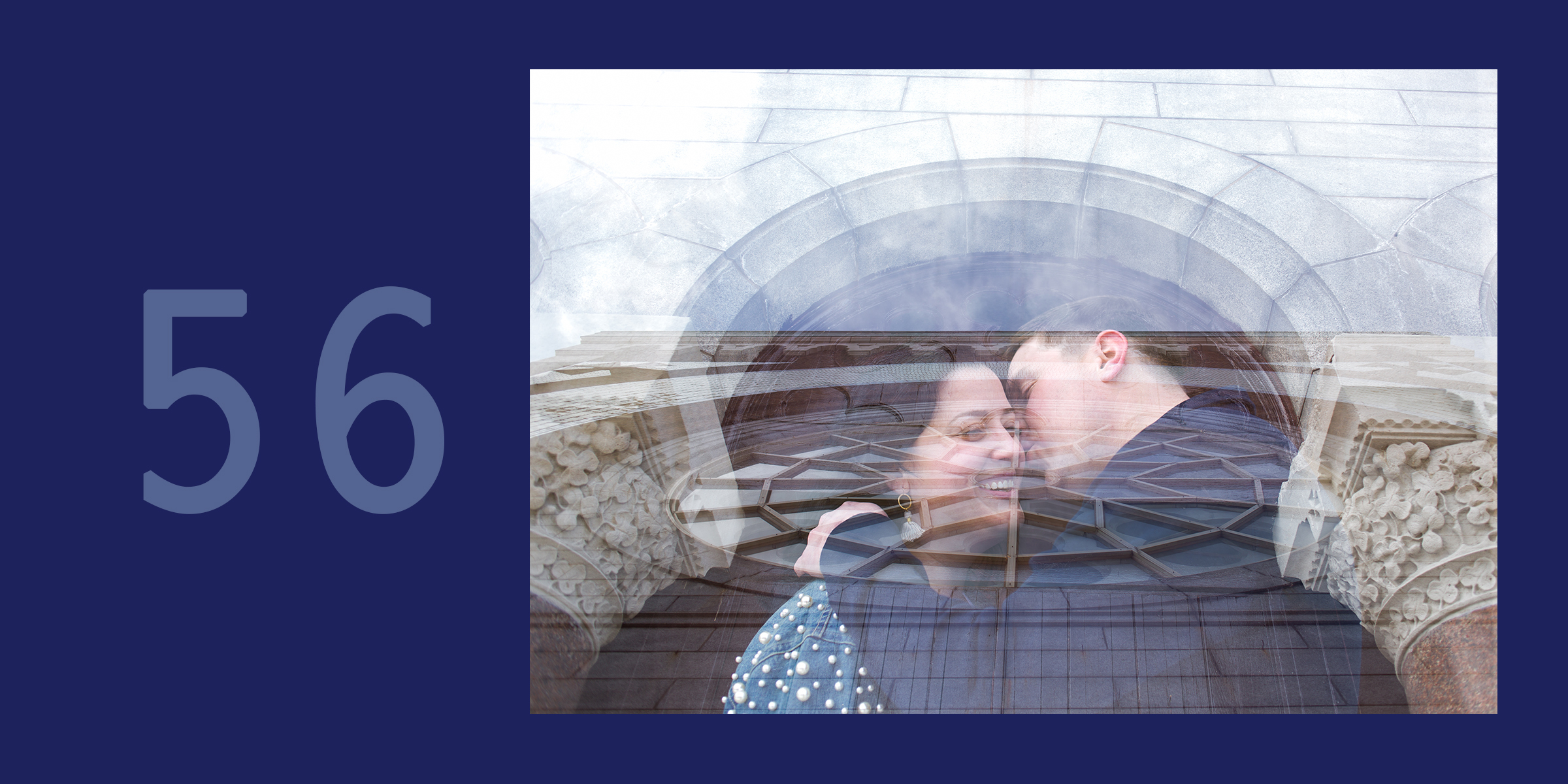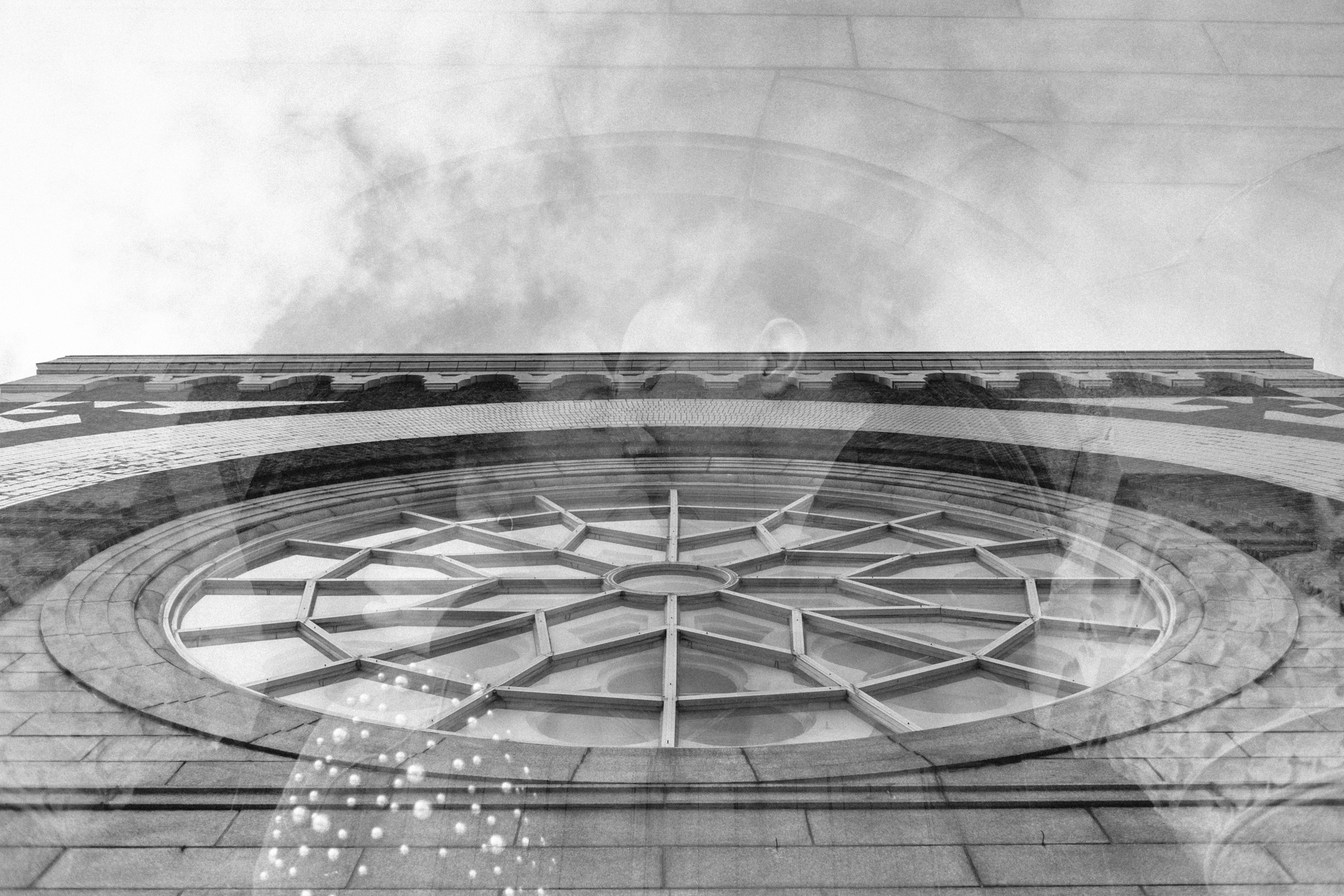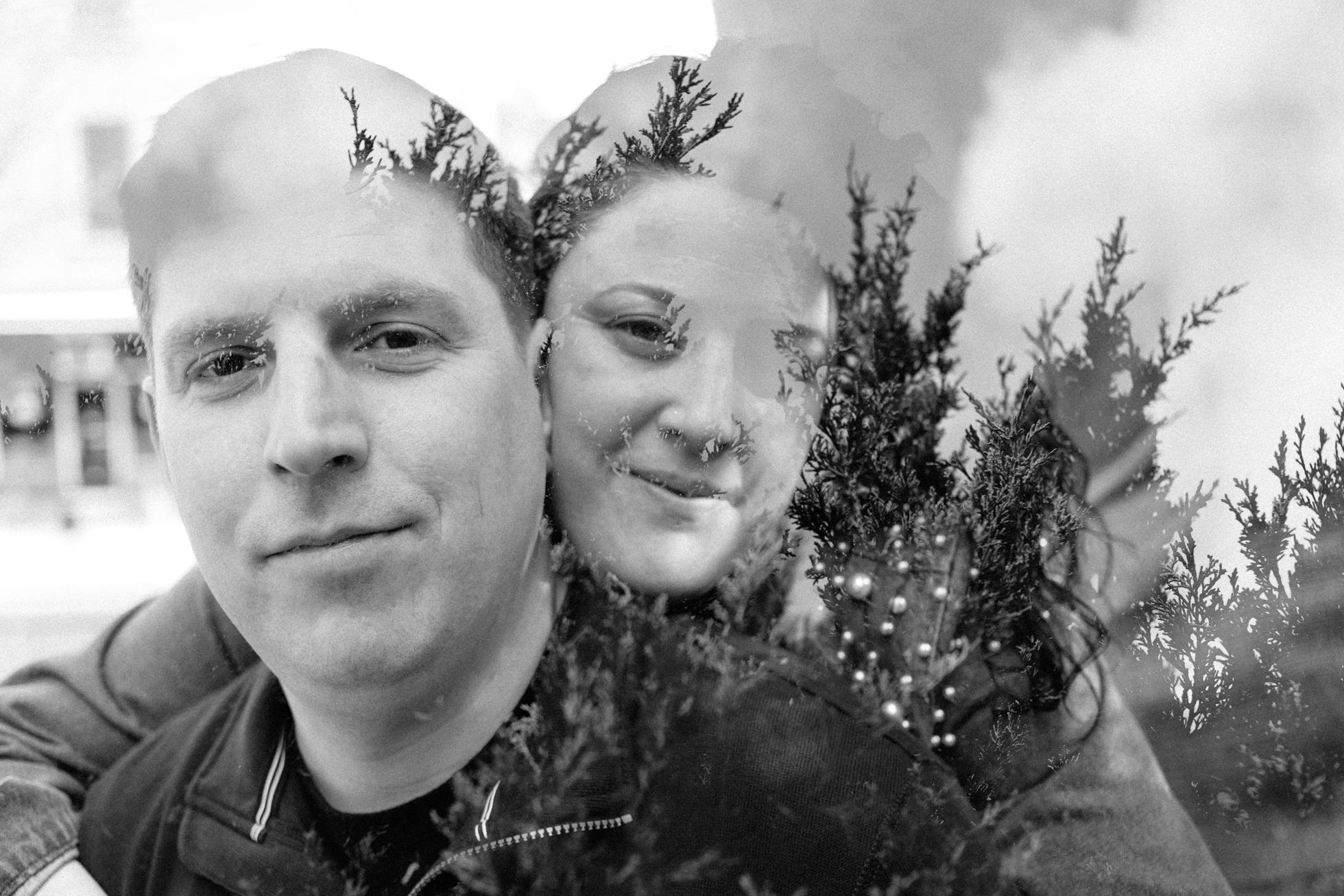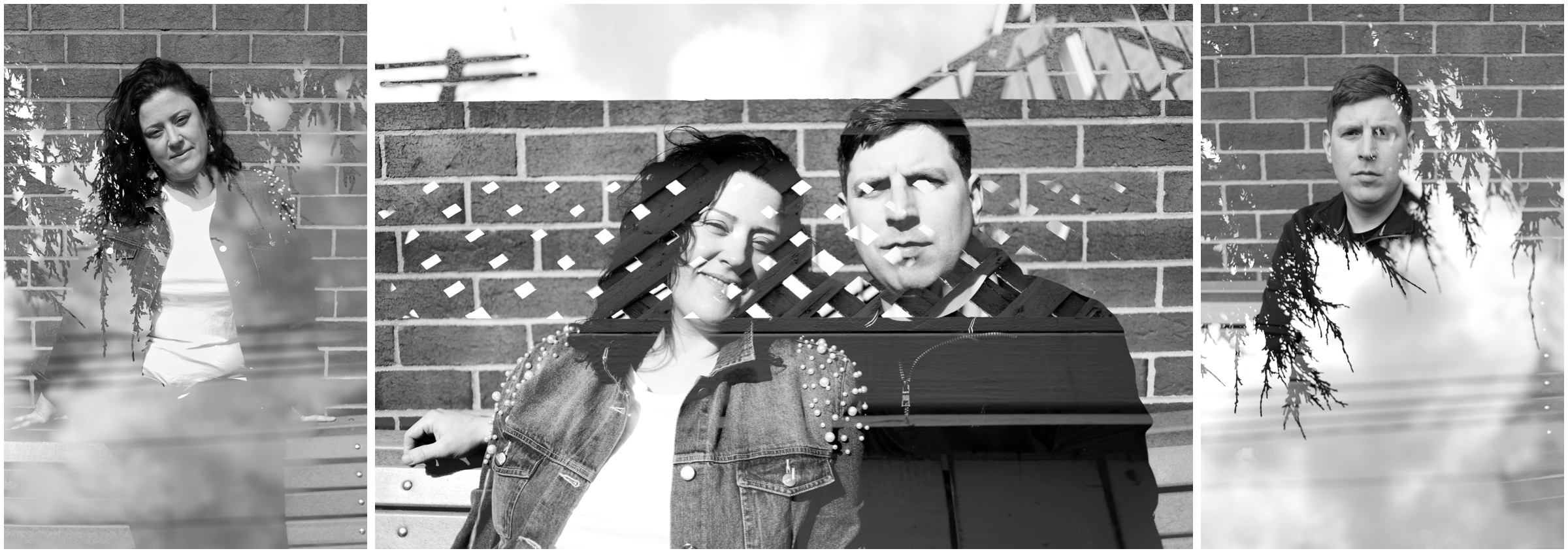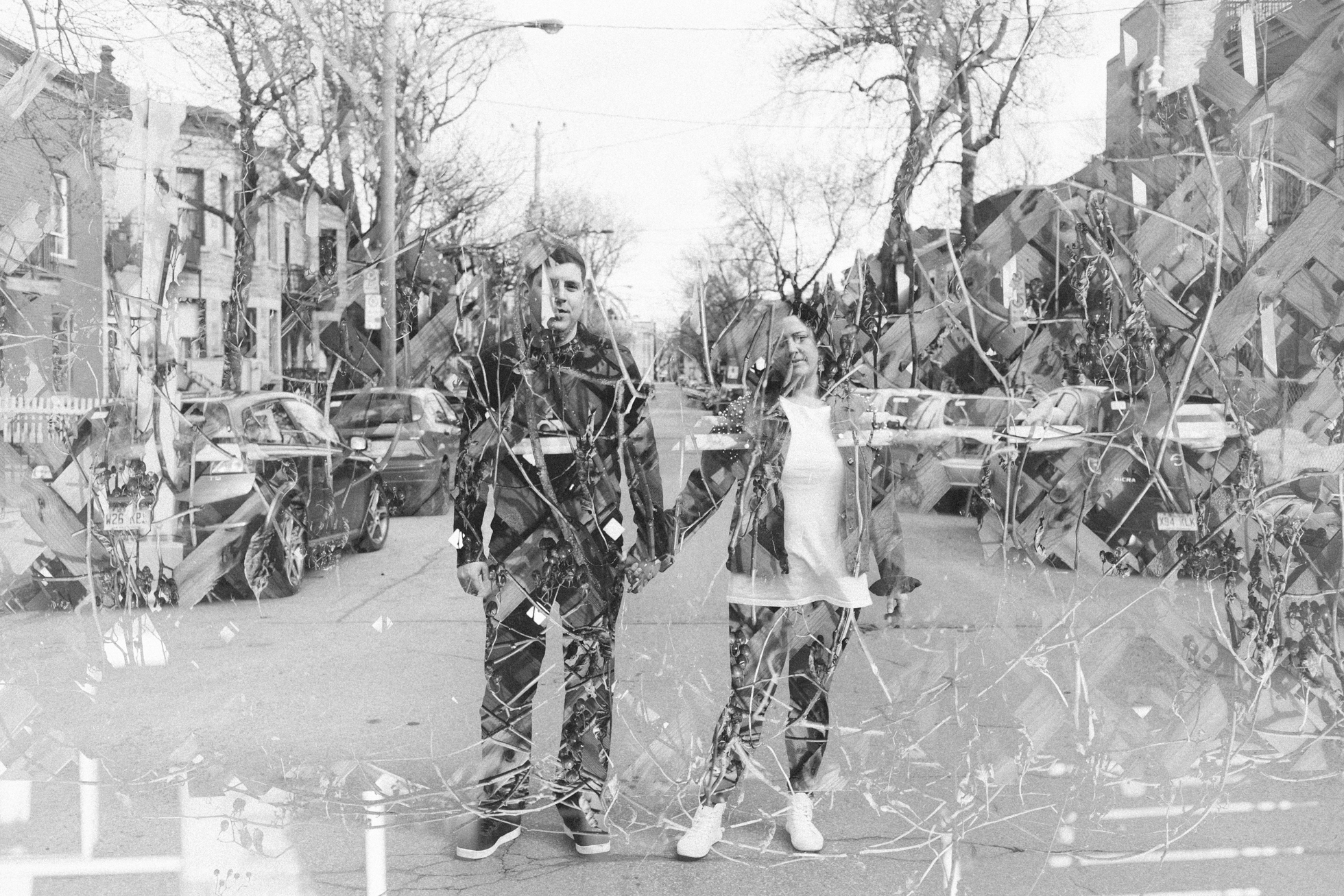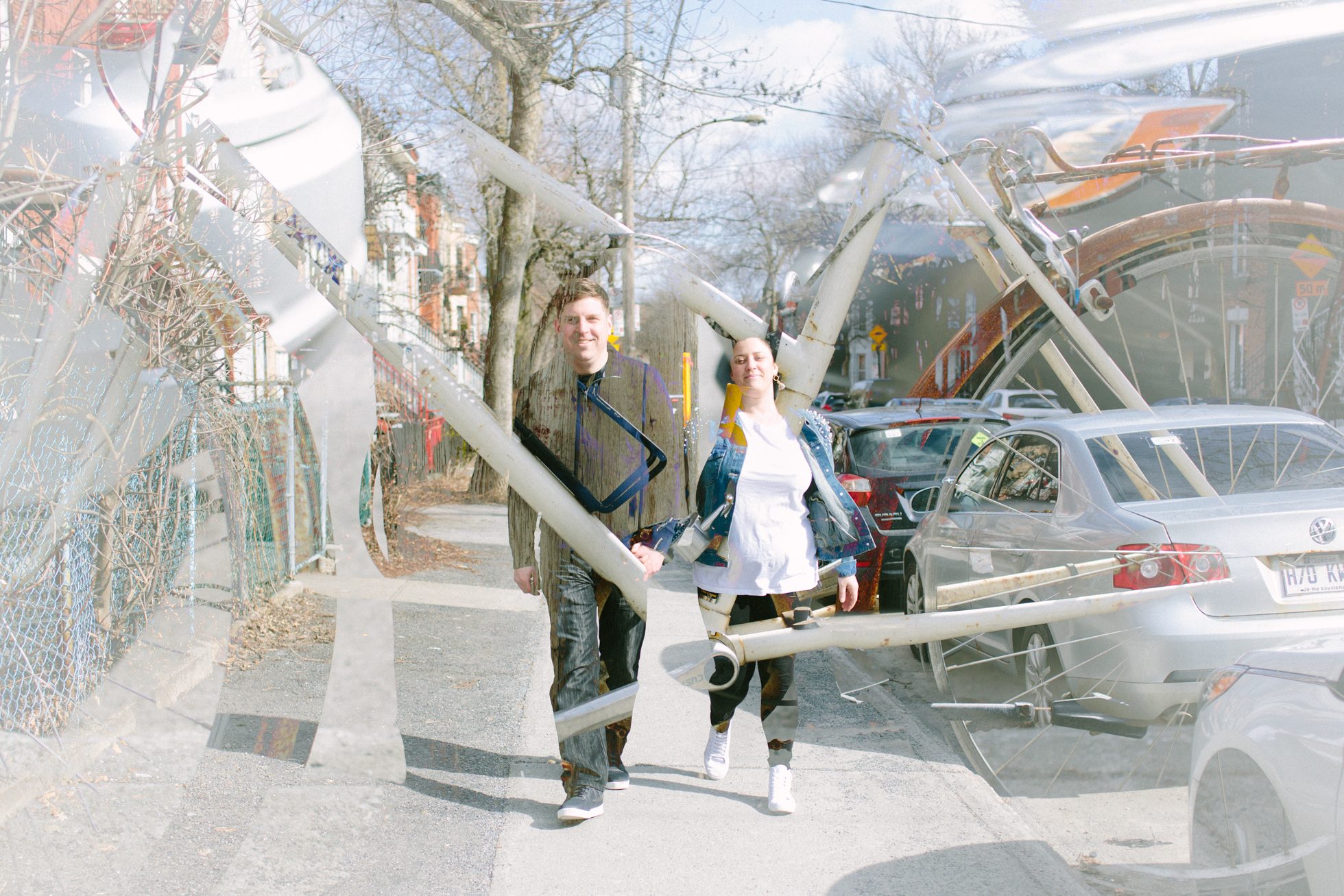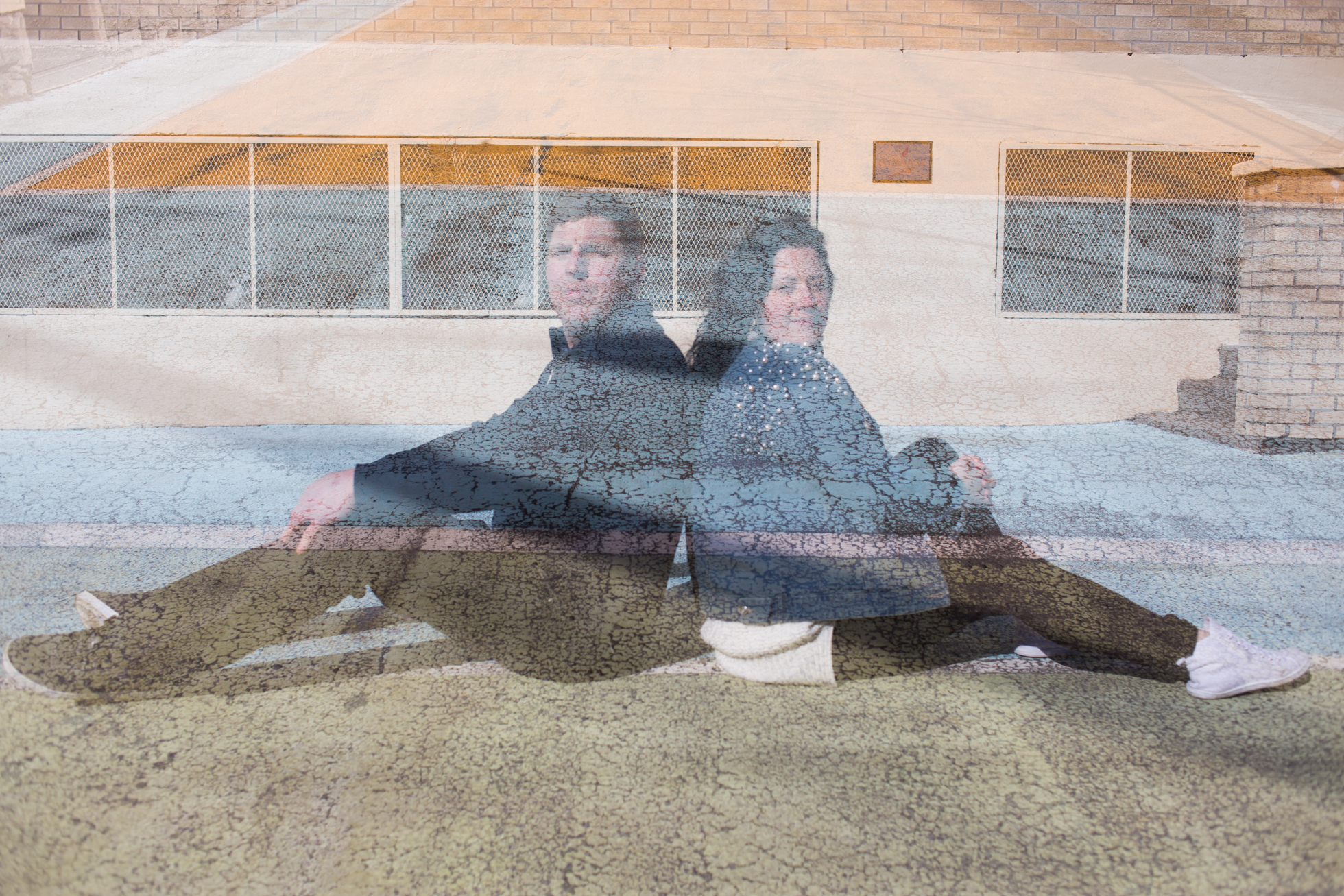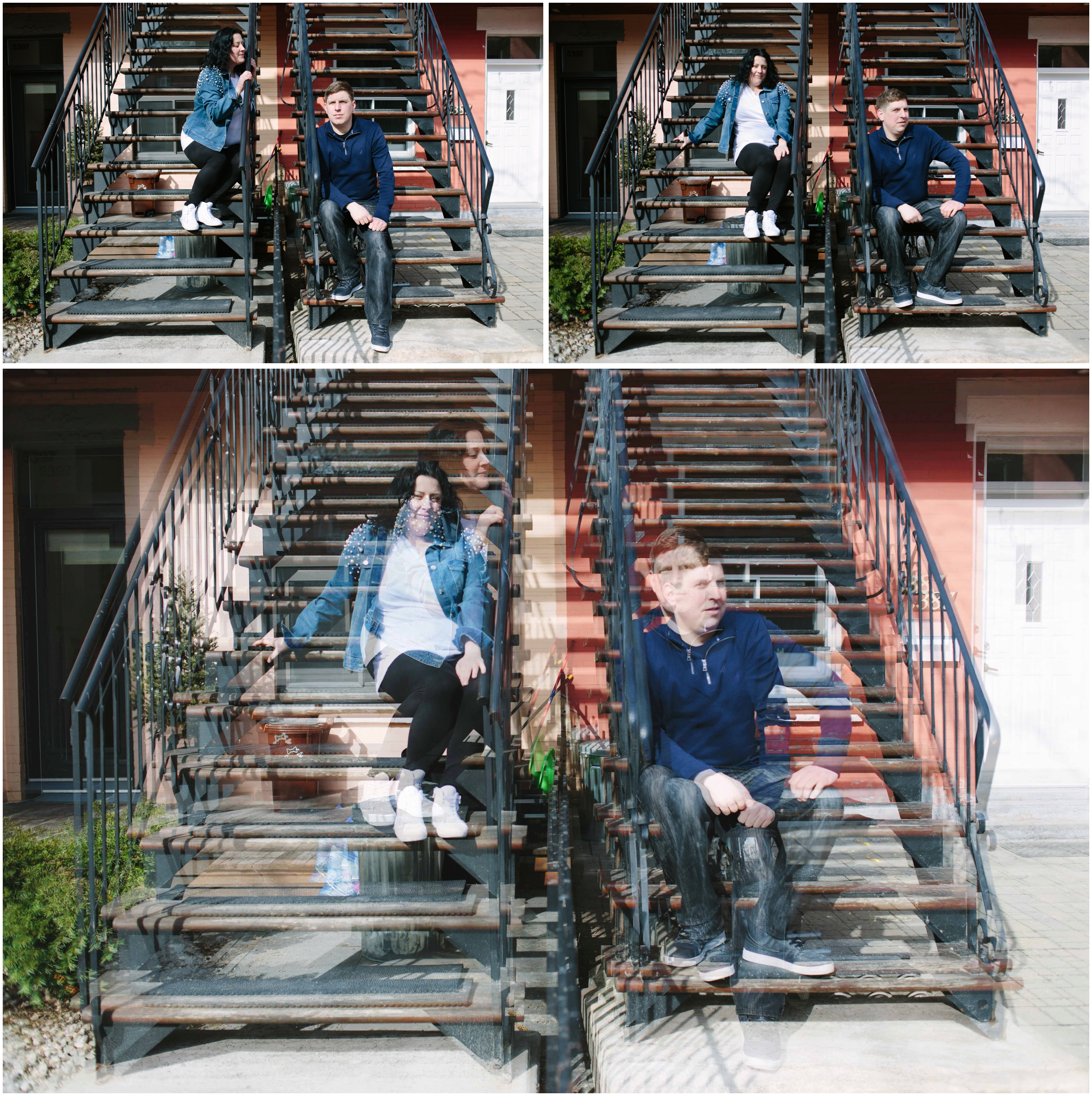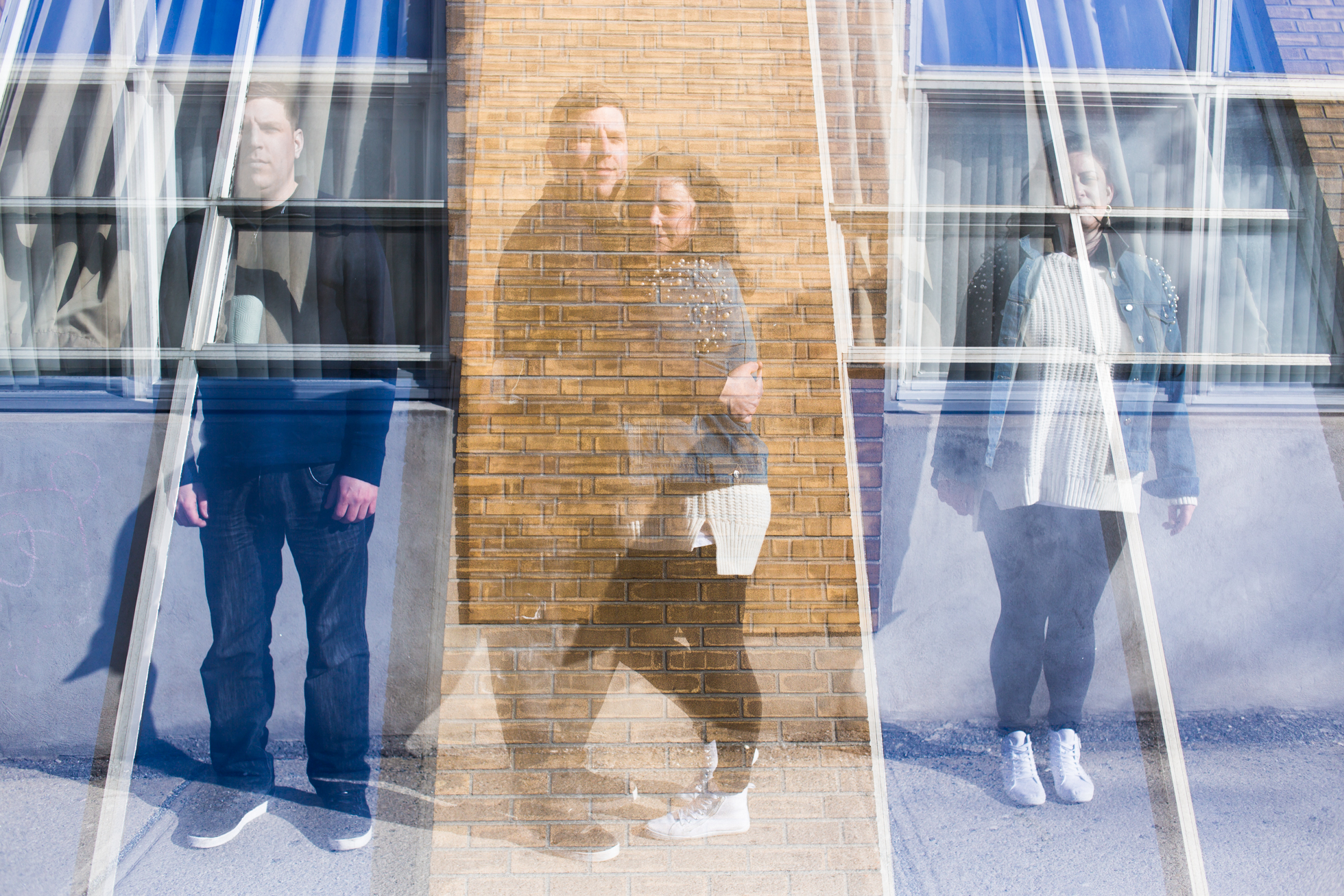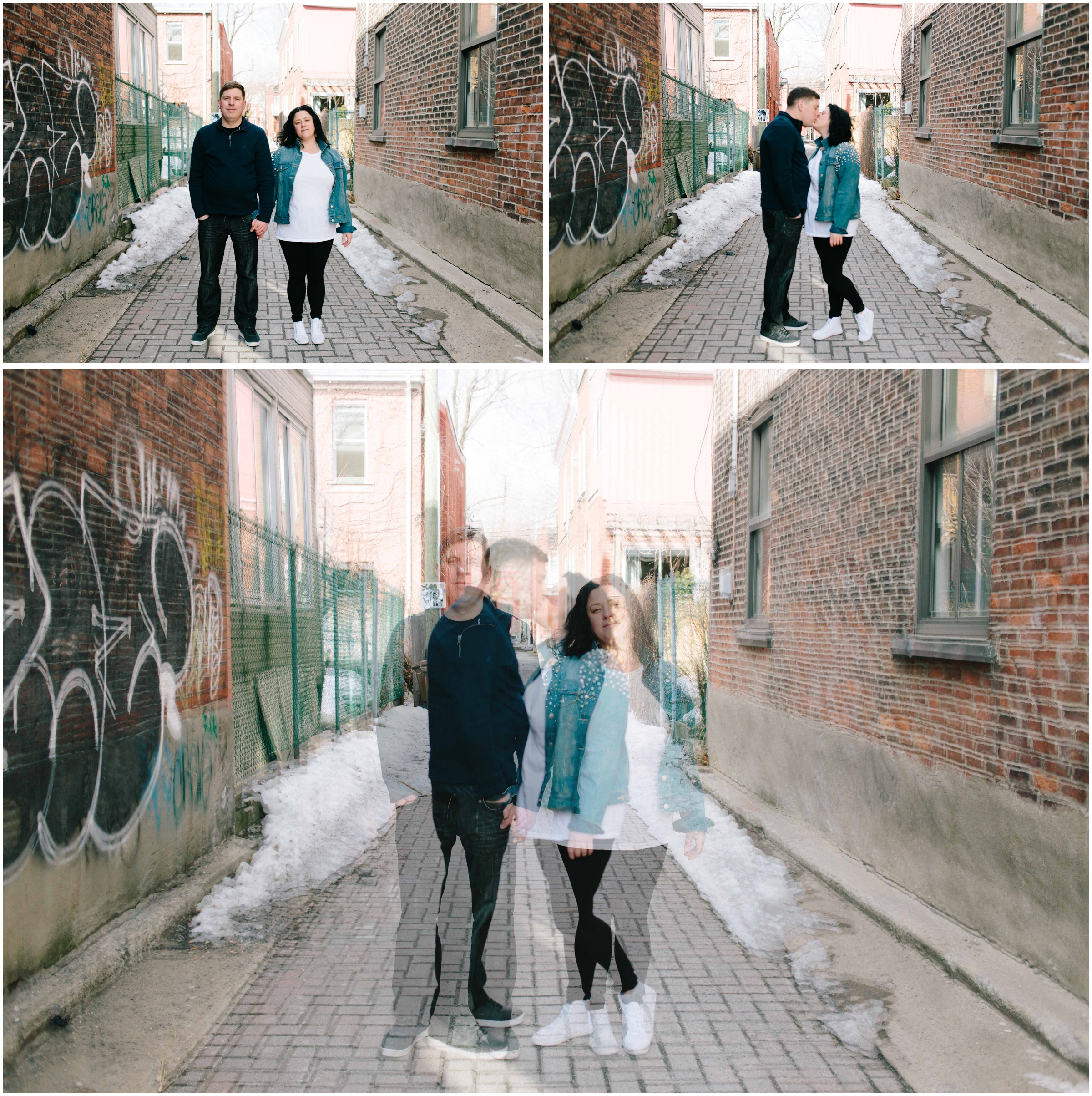One of the best parts of being a freelance photographer is the instaglamour filter people apply to their vision of your life when you tell them what you do at parties. The reality is a lot more mundane: aside from a few personal projects, by and large I take photos of what other people tell me to photograph. So you might understand that receiving Andrea and Alex's photo inquiry was as refreshing as a warm towel on a transatlantic flight.
"I am very very open for you to explore your photography with us. I mean, we are both artistic and are down with experimentation on your side, I’m really into over-exposed, double-exposed pics, anything that makes it into an art piece…if you are interested in that at least. Like if there is anything you ever wanted to try and explore with a couple, we are your couple!".
~ Andrea and Alex
Ahead of the shoot Andrea sent me some inspiration photos to get the creative ball rolling. Our goal: capture some whimsical and puzzling double exposures, all in-camera. I put the Instagram hashtag feature to work and scrolled through #doubleexposure for some additional creative inspiration. I also came across this article about double exposures by Junebug Weddings. Reading through the Canon manual, I learned there are four ways to do in-camera double exposures:
Additive - The exposure of each single exposure is added cumulatively. Based on the [number of exposures], set a negative exposure compensation.
Average - Based on the [number of exposures], negative exposure compensation is set automatically as you shoot multiple exposures. If you shoot multiple exposures of the same scene, the exposure of the subject's background will be automatically controlled to obtain a standard exposure.
Bright/Dark - The brightness (or darkness) of the base image and the images to be added are compared to the same position, and then the bright (or dark) part will be left in the picture. Depending on the overlapping colors, the colors may be mixed depending on the brightness (or darkness) ratio of the compared images.
To challenge myself, I decided to experiment with each way of capturing double exposures during the photo session.
Full disclosure: before photographing Andrea and Alex, I had only experimented with the in-camera double exposure setting once, five years ago, when I first bought my Canon 5d Mark iii. To say the least, I had no clue how this feature worked. I appreciate Andrea and Alex's patience as I fiddled with additive, average, bright, and dark exposures. Shooting these photos in Montreal's Mile End presented the challenge of getting a shot of the couple without a busy background or horizon. Because of this, I found the most effective images were captured using the additive double exposure setting limited to two or three exposures. That said, I would love to experiment more with the light and dark exposure settings with a wide open horizon.
Needless to say, I learned a lot during this session about how to shoot in-camera double exposures. Join me for a few moments of constructive self-criticism. It was a challenge to explore a new technique while still maintaining enough attention on the dynamic between myself and the couple to elicit the types of portraits I typically capture. As I use this in-camera setting more, I will get a better idea of which double exposure setting will work best for the shooting conditions. Becoming more fluid with the technical side will allow me to put more attention towards my subjects. During this session I think I did a good job of incorporating interesting elements from the environment -- a church, a bicycle, a classic Montreal front stoop -- into the double exposure shots. I wish I had read this double exposure tutorial by Sara Byrne Photography prior to the session where she explains how to use live view and base images. (She also gives a great description about the different ways to control multiple exposures.) Using the live view setting while shooting would allow me to better harmonize my subjects and second exposures in future sessions. More double exposure experiments to come!
This Life by Selena Photography blog post about couple photography was created by Montreal portrait photographer Selena Phillips-Boyle. Here you can see this Ottawa couple session or this Montreal photo session.
Cet article de blogue sur la photographie de couple Life by Selena était créé par Selena Phillips-Boyle, photographe de portraits montréalaise.

